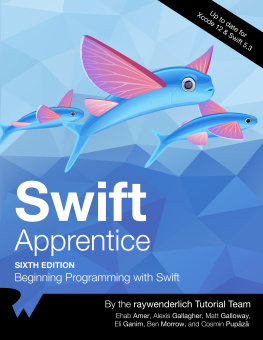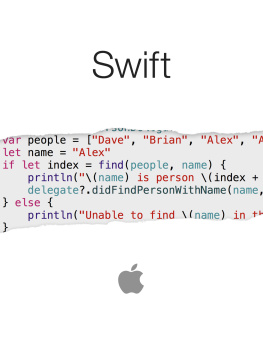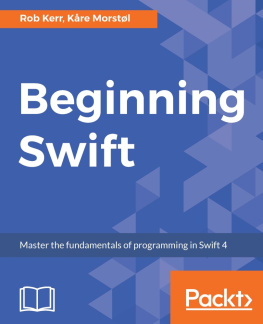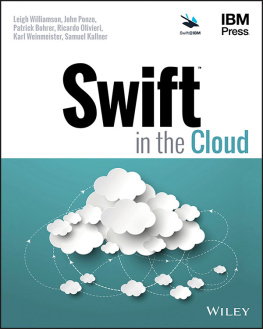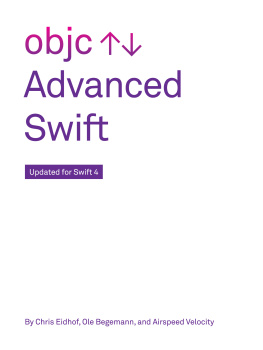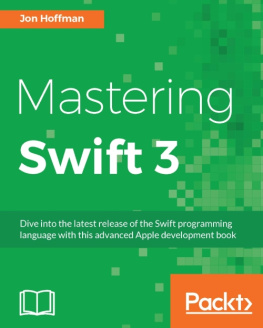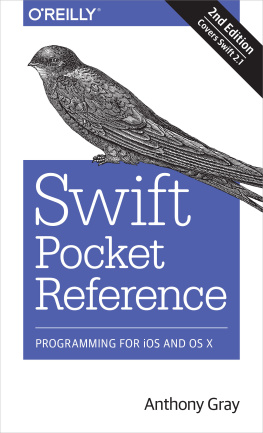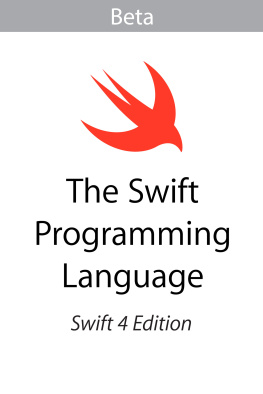About Swift
Swift is a new programming language for iOS and OS X apps that builds on the best of C and Objective-C, without the constraints of C compatibility. Swift adopts safe programming patterns and adds modern features to make programming easier, more flexible, and more fun. Swifts clean slate, backed by the mature and much-loved Cocoa and Cocoa Touch frameworks, is an opportunity to reimagine how software development works.
Swift has been years in the making. Apple laid the foundation for Swift by advancing our existing compiler, debugger, and framework infrastructure. We simplified memory management with Automatic Reference Counting (ARC). Our framework stack, built on the solid base of Foundation and Cocoa, has been modernized and standardized throughout. Objective-C itself has evolved to support blocks, collection literals, and modules, enabling framework adoption of modern language technologies without disruption. Thanks to this groundwork, we can now introduce a new language for the future of Apple software development.
Swift feels familiar to Objective-C developers. It adopts the readability of Objective-Cs named parameters and the power of Objective-Cs dynamic object model. It provides seamless access to existing Cocoa frameworks and mix-and-match interoperability with Objective-C code. Building from this common ground, Swift introduces many new features and unifies the procedural and object-oriented portions of the language.
Swift is friendly to new programmers. It is the first industrial-quality systems programming language that is as expressive and enjoyable as a scripting language. It supports playgrounds, an innovative feature that allows programmers to experiment with Swift code and see the results immediately, without the overhead of building and running an app.
Swift combines the best in modern language thinking with wisdom from the wider Apple engineering culture. The compiler is optimized for performance, and the language is optimized for development, without compromising on either. Its designed to scale from hello, world to an entire operating system. All this makes Swift a sound future investment for developers and for Apple.
Swift is a fantastic way to write iOS and OS X apps, and will continue to evolve with new features and capabilities. Our goals for Swift are ambitious. We cant wait to see what you create with it.
A Swift Tour
Tradition suggests that the first program in a new language should print the words Hello, world on the screen. In Swift, this can be done in a single line:
If you have written code in C or Objective-C, this syntax looks familiar to youin Swift, this line of code is a complete program. You dont need to import a separate library for functionality like input/output or string handling. Code written at global scope is used as the entry point for the program, so you dont need a main function. You also dont need to write semicolons at the end of every statement.
This tour gives you enough information to start writing code in Swift by showing you how to accomplish a variety of programming tasks. Dont worry if you dont understand somethingeverything introduced in this tour is explained in detail in the rest of this book.
Note
For the best experience, open this chapter as a playground in Xcode. Playgrounds allow you to edit the code listings and see the result immediately.
Simple Values
Use let to make a constant and var to make a variable. The value of a constant doesnt need to be known at compile time, but you must assign it a value exactly once. This means you can use constants to name a value that you determine once but use in many places.
varmyVariable = 42myVariable = 50letmyConstant = 42
A constant or variable must have the same type as the value you want to assign to it. However, you dont always have to write the type explicitly. Providing a value when you create a constant or variable lets the compiler infer its type. In the example above, the compiler infers that myVariable is an integer because its initial value is a integer.
If the initial value doesnt provide enough information (or if there is no initial value), specify the type by writing it after the variable, separated by a colon.
letimplicitInteger = 70letimplicitDouble = 70.0letexplicitDouble: Double = 70
Experiment
Create a constant with an explicit type of Float and a value of 4.
Values are never implicitly converted to another type. If you need to convert a value to a different type, explicitly make an instance of the desired type.
letlabel = "The width is "letwidth = 94letwidthLabel = label + String(width)
Experiment
Try removing the conversion to String from the last line. What error do you get?
Theres an even simpler way to include values in strings: Write the value in parentheses, and write a backslash (\) before the parentheses. For example:
letapples = 3letoranges = 5letappleSummary = "I have \(apples) apples."letfruitSummary = "I have \(apples + oranges) pieces of fruit."
Experiment
Use \() to include a floating-point calculation in a string and to include someones name in a greeting.
Create arrays and dictionaries using brackets ([]), and access their elements by writing the index or key in brackets.
varshoppingList = ["catfish", "water", "tulips", "blue paint"]shoppingList[1] = "bottle of water"varoccupations = ["Malcolm": "Captain","Kaylee": "Mechanic",]occupations["Jayne"] = "Public Relations"
To create an empty array or dictionary, use the initializer syntax.
letemptyArray = String[]()letemptyDictionary = Dictionary<String, Float>()
If type information can be inferred, you can write an empty array as [] and an empty dictionary as [:]for example, when you set a new value for a variable or pass an argument to a function.
shoppingList = [] // Went shopping and bought everything.
Control Flow


